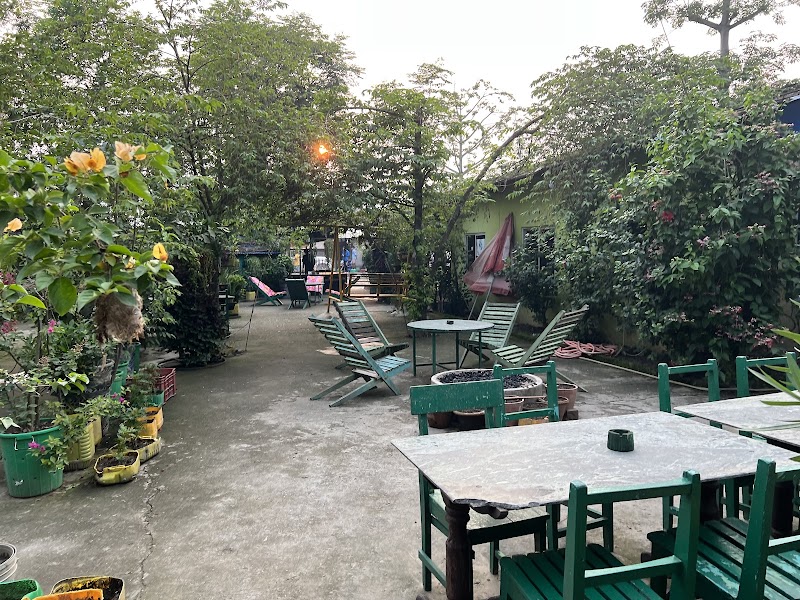
Experience the Vibrant Tharu Cultural Shows in Ratnanagar, Nepal
Tharu Cultural Shows in Ratnanagar provide a compelling glimpse into one of Nepal’s most vibrant indigenous communities. Rich with music, dance, and storytelling, these performances combine tradition with a warm local welcome, perfect for travelers looking to connect deeply with Nepal’s diverse cultural landscape.
Arrive Early for Best Seats
Tharu shows start around 6 PM, so arriving 30 minutes early ensures a good viewing spot and lets you absorb the lively pre-show atmosphere.
Wear Comfortable Walking Shoes
Village roads can be uneven and dusty; sturdy shoes keep you steady during walks to show venues and nearby market exploration.
Stay Hydrated in the Terai Heat
The lowland climate is warm and humid—carry water and sip often to maintain energy for the evening performance.
Bring Insect Repellent
Evenings near forest edges attract mosquitoes; repellent helps you enjoy the show without distraction.
Experience the Vibrant Tharu Cultural Shows in Ratnanagar, Nepal
Ratnanagar, a gateway town to Nepal's Terai plains, pulses with the lively spirit of the Tharu people. Their cultural shows offer more than performances; they’re an invitation to witness a community fiercely proud of its heritage. As dusk falls, you find yourself immersed in the rhythmic beats of dhol drums and the sway of brightly colored tribal costumes, each step and gesture telling stories shaped by the land itself.
The shows often take place in open-air venues or local community centers, lending an authentic, grounded atmosphere. The audience sits close enough to catch every expression, every practiced movement performed with crisp precision. Musicians play indigenous instruments like the bansuri and the mahuri, while dancers enact scenes from Tharu folklore, seasonal festivals, and everyday village life.
Planning your visit is easier than it seems. Ratnanagar lies just under 100 km from Kathmandu, accessible by a scenic road trip cutting through hill and flatland, offering a gradual descent from the mountains into subtropical jungle where the Tharu have thrived for centuries. The town’s elevation at roughly 150 meters above sea level means the climate is warm—pack lightweight cotton clothes but prepare for cooler evenings.
Shows tend to run in the early evening, around 6 to 8 PM—the heat softens, and the community gathers, animated by tradition but welcoming to newcomers. To optimize your experience, arrive early to grab a good seat and perhaps visit local markets during the day for handcrafted souvenirs or sampling Tharu delicacies.
The terrain around Ratnanagar invites gentle exploration too. Short walks through nearby forest patches offer sightings of native wildlife—cunning langurs, colorful birds, and the occasional sambar deer. These surroundings are not merely a backdrop; they form an integral part of the Tharu lifestyle, vividly reflected in their dances and storytelling.
Hydration is key here—the air hums with humidity, and the energy of the performances demands you stay alert and engaged. Wear comfortable shoes suited for walking over uneven village roads and bring insect repellent as evening insects can be persistent.
The Tharu shows in Ratnanagar are practical windows into living culture. They challenge visitors to respect a tradition that resists erosion by modernity yet welcomes genuine curiosity. Experience them not as mere entertainment but as encounters with a society deeply connected to its environment and history. The energy is palpable, the stories vivid, leaving you with a sense of having understood a people through the universal language of movement and music.
Nearby Trips
All Adventures
Boat Charters
Water Activities
Adventures near Ratnanagar, Nepal
Discover the unique and memorable adventures that make Ratnanagar, Nepal special.
Frequently Asked Questions
How long do the Tharu Cultural Shows typically last?
Most performances last between 1 to 1.5 hours, starting around 6 PM and finishing before 8 PM, allowing time for visitors to enjoy local markets before or after.
Are the shows suitable for children and families?
Yes. The Tharu Cultural Shows are family-friendly, with lively dances and colorful costumes that capture the attention of all ages.
Is it possible to interact with performers or learn the dances?
Some venues encourage audience interaction after the show. Visitors can often meet performers, ask questions, and even try basic dance steps, depending on the event.
What languages are spoken during these shows?
Performances primarily use Tharu cultural expressions through dance and music rather than spoken word, so language barriers are minimal. Hosts often speak basic Nepali and some English.
Can I combine a visit to the Tharu shows with wildlife tours nearby?
Yes. Ratnanagar is close to Chitwan National Park, so it's common to plan wildlife safaris during the day followed by a cultural performance in the evening.
Are there any environmental concerns to be aware of when visiting?
Visitors should respect local customs and natural surroundings, avoid littering, and support community-led initiatives that protect the cultural and ecological balance.
Recommended Gear
Comfortable Walking Shoes
Supportive footwear for dusty and uneven village paths ensures comfort during walking and exploring.
Water Bottle
Staying hydrated throughout the warm day and evening prevents fatigue.
Lightweight Layered Clothing
Evening temperatures drop moderately; layers keep you comfortable during outdoor shows.
Insect Repellent
Monsoon and warm months bring plentiful mosquitoes, especially after dusk.
Local Insights
Hidden Gems
- "The nearby Dumrakholi forest patch offers quiet bird watching and a chance to see langurs in their natural setting."
- "Small roadside tea stalls in Ratnanagar provide authentic Tharu food and fresh local hospitality."
Wildlife
- "Look out for Indian Peafowl dancing in the underbrush and the occasional glimpse of sambar deer at dawn."
- "Common langurs swing skillfully between trees near village edges."
History
"The Tharu people have inhabited the Terai region for centuries, resisting malaria and preserving distinct cultural traditions despite changing political landscapes."
